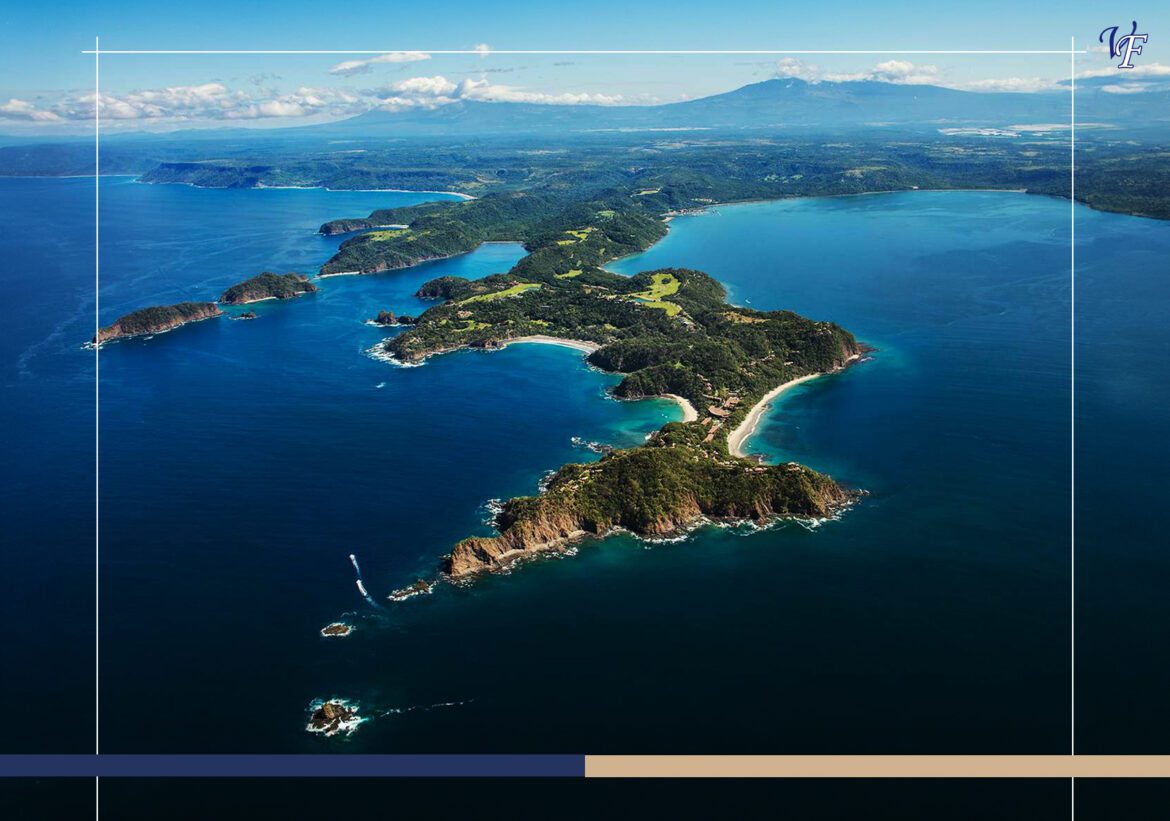Coffee is more than just a beverage in Costa Rica; it’s integral to the country’s identity and culture. Renowned for its exceptional quality and flavor, coffee enthusiasts enjoy coffee in Costa Rica worldwide.
Coffee smells like freshly ground heaven.
Jessi Lane Adams
As Jessi Lane Adams eloquently put it, the scent of freshly brewed Costa Rican coffee is like “freshly ground heaven,” and it’s no wonder that coffee production is a vital source of income for the country. But Costa Rica coffee is more than just a commodity; it’s a point of national pride. Costa Ricans are known for their unwavering commitment to producing high-quality coffee and maintaining strict standards.
In this blog, we’ll delve into some interesting facts about Costa Rica coffee, highlighting why it’s so special and how it shapes the country’s identity.
About Costa Rican Coffee
| Category | Information |
| Coffee Exports Ranking | 15th in the world (2019/2020) |
| Annual Coffee Exports | 1,039,000 bags (60 kg) (2019/2020) |
| Percentage of World Market | 1% |
| Typical Varieties | Typica, Caturra, Catuai, Villa Sarchi, Bourbon, Geisha |
| Main Coffee Regions | Tarrazu, Central Valley, Western Valley, Tres Rios, Brunca, Guanacaste, Orosi & Turialba |
| Harvest Season | October – March |

1. Origins of Coffee Production in Costa Rica
- The history of Costa Rica is intertwined with the cultivation and production of coffee.
- In 1821, when Costa Rica was on the brink of independence from Spain, the government distributed coffee beans to encourage coffee production.
- At that time, there were only around 7,000 coffee bushes in the country.
- In 1831, the Costa Rican government introduced a policy allowing anyone who produced coffee in a specific area for five years to claim land ownership.
- This policy sparked a rapid increase in coffee cultivation and production throughout the country.
- Coffee quickly became the dominant export commodity, and its success played a crucial role in developing the Costa Rican economy and infrastructure.
- Today, Costa Rica is renowned for its high-quality specialty coffee and is a significant player in the global coffee industry.
2. The Role of Coffee in the Economy and Development of Costa Rica
- Coffee has been the primary export commodity in Costa Rica for over a century.
- From 1846 to 1890, coffee was the only export commodity in the country.
- Today, coffee remains the most prominent export and is highly regarded globally for its quality and distinct flavor profiles.
- Costa Rica is also known for its exports of bananas and pineapples.
- Income generated from coffee exports played a significant role in developing Costa Rica’s infrastructure and culture.
- The National Theater, the country’s first public libraries, and the University of Santo Tomas were all built using revenue generated from coffee exports.
3. Costa Rican Coffee Profile
Costa Rican coffee is well-known for its clean and consistent flavor profile. Despite its typically light and delicate body, its rich taste is often accompanied by a pleasant sweetness. However, for those seeking a more unique and complex coffee experience, exploring micro-lots that use non-traditional processing methods is recommended, as these can offer surprising flavor explosions. It is important to note that coffee from different terroirs can vary in flavor, even when the same varieties are processed in the same way.
4. Coffee Production Support and Promotion in Costa Rica
- The Costa Rican government has a long-standing coffee history of supporting and promoting its production in the country.
- In 1933, the Institute for the Protection of Coffee was established to protect small coffee producers from exploitation by resellers.
- Later in 1948, the institute became the Coffee Workshop (Oficina del Cafe).
- The Coffee Workshop was eventually renamed the Instituto del Café de Costa Rica (ICAFE), which still operates today.
- ICAFE is engaged in experimental coffee plantations for research purposes.
- The institute plays a significant role in promoting coffee of Costa Rica globally.
- Costa Rica coffee is highly regarded for its quality and is considered a specialty coffee.
5. Specialty Coffee in Costa Rica
- Costa Rica was unfamiliar with specialty coffee until the 1980s.
- The country mainly exported large coffee brands until the year 2000.
- There has been a boom in microprocessing stations in recent years, leading to the development of specialty coffee.
- More farmers are investing in smaller processing machines to have more control over the coffee process.
- Costa Rica is famous for specialty coffee micro-lots that can be traced to a specific plot on a particular farm.
- 90% of Costa Rica’s coffee producers work on farms smaller than 5 hectares, a precondition for micro and nano lots quality coffee.
- The Cup of Excellence, a specialty coffee competition, has been held in Costa Rica since 2007, developing high-quality coffee production standards in the country.
- Jordan Dabov was a member of the international jury of COE in Costa Rica in 2015 and 2017 and bought Dona Ileana coffee at the online auction, which won 11th place in the competition.
6. Coffee Farming in Costa Rica: A Family Affair
In Costa Rica, coffee farming is more than just a livelihood; it’s a way of life for many Ticos. The coffee industry is dominated by small-scale, family-owned farms, with over 80,000 farms spreading throughout the country. The coffee industry is so ingrained in Costa Rican culture that approximately 10% of the country’s population is involved in its production.
If you want to understand the Costa Rican diet, coffee significantly shapes the country’s food culture and lifestyle. Costa Ricans have a long-standing love affair with coffee, and it’s not just a beverage; it’s a way of life. In fact, coffee is often considered a symbol of national pride and identity in Costa Rica. From breakfast to after-dinner, coffee is a staple in most Costa Rican households, and it’s common for locals to consume multiple cups of coffee throughout the day.
Costa Rica is one of the few countries that have implemented a strict program to certify sustainable coffee farming, known as the “Café Practices” program. This program encourages farmers to adopt environmentally friendly practices, such as conserving water and energy, protecting wildlife habitats, and using organic fertilizers. Thanks to these efforts, Costa Rican coffee is not only known for its exceptional quality and flavor but also for its sustainability and commitment to the environment.
7. Ideal Conditions for Coffee Production
- Costa Rica coffee is known for its exceptional taste and quality.
- The Central Valley region of Costa Rica is the primary location for coffee production.
- The climate in the Central Valley is cold, with high altitudes, which is ideal for coffee growth.
- The fertile soil in Costa Rica is another factor that contributes to the excellent quality of coffee.
- Climate and soil conditions create a perfect environment for growing coffee.
- Costa Rica’s climate allows coffee to mature slowly, producing richer flavor and aroma.
- The high altitude also plays a role in the development of coffee, as it slows down the growth process and allows for more complex flavors to develop.
- Overall, the natural conditions of Costa Rica contribute significantly to the high-quality coffee production in the country.
8. Coffee Brewing Traditions in Costa Rica
The traditional way to brew Costa Rica coffee is known as “Aguas de Medias,” or “Sock Water.” It involves using a “chorreador” or “coffee sock” filter shaped like a sock and suspended on a wireframe. The sock is filled with ground coffee and hot, but not boiling, water is poured over it. The resulting brew is strong and flavorful, with less bitterness than other methods. This method is considered an art form and an essential part of Costa Rican culture.
9. Costa Rica’s Coffee Production and Export
- Costa Rica produces 1.5 million bags of coffee annually
- Costa Rica is ranked 13th in the world for coffee production
- Despite not being the largest producer, Costa Rica is known for producing high-quality coffee
- Coffee production contributes to 11% of the country’s total exports.
10. Costa Rican Coffee Plantation Tours
- Coffee plantation tours in Costa Rica are usually conducted by experienced guides who take visitors through coffee-making.
- Visitors can witness the various stages of coffee production, from picking the coffee cherries to roasting and packaging the beans.
- Many coffee plantations offer interactive tours where visitors can participate in harvesting and processing coffee beans.
- Visitors can learn about the different types of coffee plants grown in Costa Rica, including the Arabica and Robusta varieties.
- Some coffee plantation tours include tastings of different types of coffee, allowing visitors to sample the unique flavors and aromas of Costa Rican coffee.
- Coffee tourism is a great way to support local farmers and the economy of Costa Rica.
- Some coffee plantations also offer lodging and accommodations for visitors who want to stay in the coffee-growing regions and experience the coffee-making process for longer periods of time.
- The coffee plantation tours provide an opportunity for visitors to experience the natural beauty of Costa Rica’s countryside and learn about its agricultural heritage.
The popularity of coffee in Costa Rica extends beyond the country’s borders. It is often considered as a luxurious gift option to buy from Costa Rica because of its high-quality beans and unique brewing methods. The distinct flavor profile and cultural significance make coffee an ideal present for coffee enthusiasts and those interested in exploring new flavors. Overall, Costa Rican coffee’s popularity as a gift option highlights its status as a prized cultural export and showcases the country’s deep-rooted coffee culture.

Conclusion
Experiencing authentic Costa Rican coffee at Villa Firenze is a luxurious and unforgettable experience that allows you to savor the unique flavors of this world-renowned coffee while surrounded by the breathtaking beauty of the Pacific Coast rainforest. By learning these 10 interesting facts about Costa Rican coffee presented in this blog, you can deepen your appreciation for the rich coffee history and cultural significance of this beloved beverage. Moreover, you can impress your friends and family with your newfound knowledge and inspire them to try coffee in Costa Rica for themselves.
So, don’t miss out on this opportunity to indulge in the finest coffee in Costa Rica while enjoying the stunning views from the villa’s infinity pool, stunning gardens, and spacious balconies. Book your stay at Villa Firenze today and discover the wonders of Costa Rican coffee for yourself.











